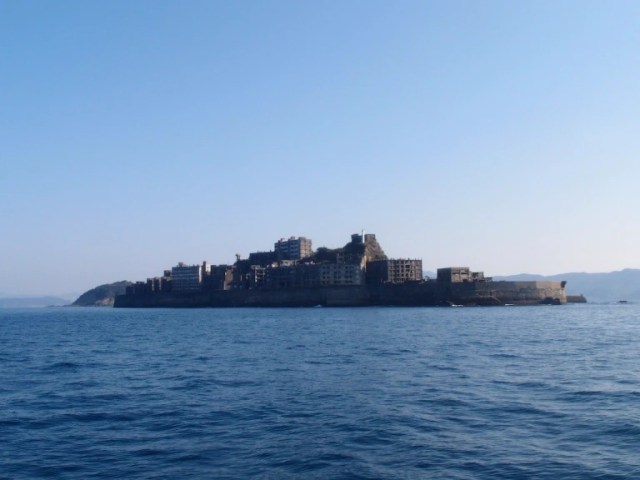
Putting together “Battleship Island” gave us a new perspective on what life was like for the families that lived there.
A while back, we spent the day recreating Japan’s most famous mountain, Mt. Fuji, in paper form. Today, we’re turning our attention, and fingertips, to another iconic sight of Japan as we build a papercraft Gunkanjima.
Officially called Hashima, the Nagasaki Prefecture island got its nickname because of its visual resemblance to a battleship (gunkan in Japanese). Previously the site of an undersea coal mining operation, Gunkanjima’s remote location meant an entire city had to be built atop the island for workers and their families to live in. When the mine suddenly shut down in 1974, though, residents got off the island as quickly as they could, turning it into a concrete ghost town with a disquieting beauty.
There are two versions of the kit, though their pieces are identical. The budget option is priced at 1,100 yen (US$10.50), while the laser-cut version that allows you to pop the pieces out without the use of any other cutting tools (which we opted for through retailer Village Vanguard’s online shop here) is 2,200 yen.
In addition to the kit’s instructions, the foundation sheet has markings for what buildings are meant to be placed where, so assembly isn’t too hard. You’ll want to be gentle with the pieces, though, as the kit’s paper is bit on the thin side.
While the kit isn’t an exact one-for-one replica of the abandoned cityscape, it’s still remarkably detailed. Looking at our reference photos of the island, we were able to spot the real-life versions of the structure we were putting together several times, like with Hashima Shrine (端島神社) here.
As we completed more buildings, the angular, battleship-like shape of the town began to form.
Like we mentioned above, Gunkanjima wasn’t just a coal mining operation, but a fully functioning community. A flat patch of land at the northern end of the island, for example, had a hospital and elementary school, and also a dormitory for teachers who instructed the miners’ children.
The west area was for residential and recreational use. In addition to apartment blocks, there was a movie theater, tennis court, swimming pool, and even a pachinko parlor.
The majority of the mining infrastructure was on the east side. While the architecture is dominated by rectangular structures, this building with a peaked roof marked the entrance to the mine’s Number-Four Shaft and housed elevators and winches that carried workers and their equipment down below sea level.
With some development on Gunkanjima going right up to the coastline, a sea wall was built to protect the city from potentially damaging ocean waves, and that too is a part of the papercraft kit.
As we put the kit together, we were reminded of a Japanese phrase, ichizan ikka. Translating literally to “one mountain, one family,” it’s meant to convey the feeling of solidarity among miners who work at the same site, as the long hours and other demands of their job mean that they, and their families, often become closer to each other than coworkers in regular nine-to-five office jobs would.
It’s said that at the peak of its boom days, Gunkanjima had a population density that was nine times that of Tokyo. Putting the kits’ pieces in place, and seeing just how close people lived to one another, we couldn’t help but be reminded of the importance of strong bonds within a community, even if you and your neighbors aren’t hauling coal together.
Photos ©SoraNews24
● Want to hear about SoraNews24’s latest articles as soon as they’re published? Follow us on Facebook and Twitter!
[ Read in Japanese ]

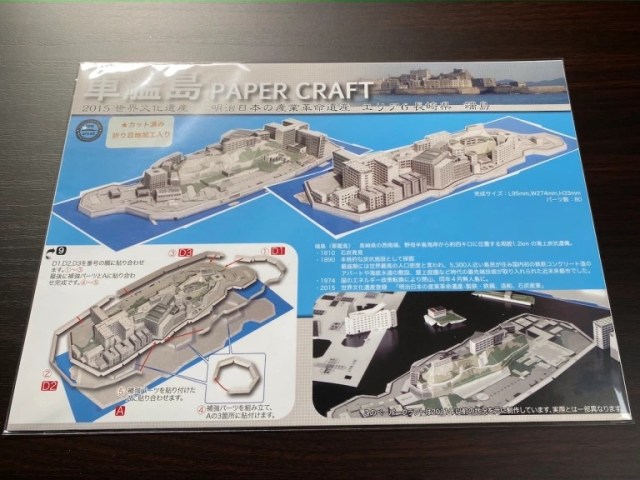
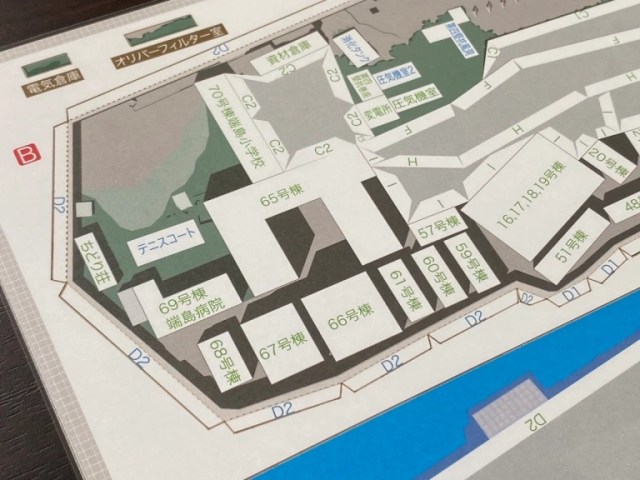
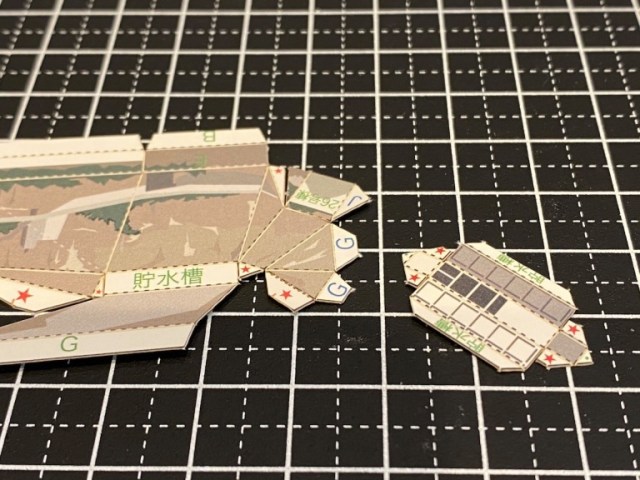
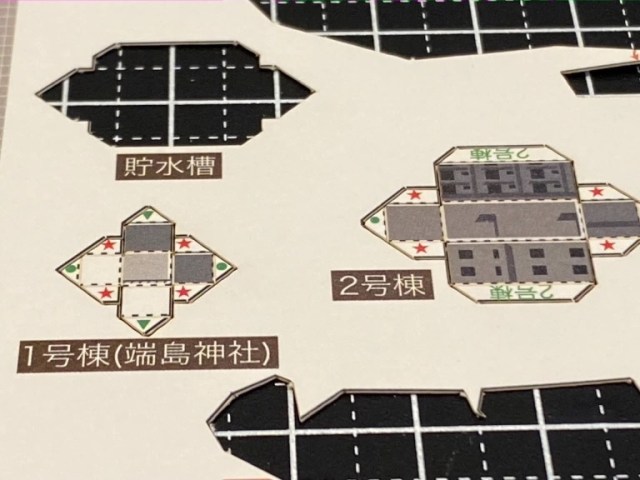
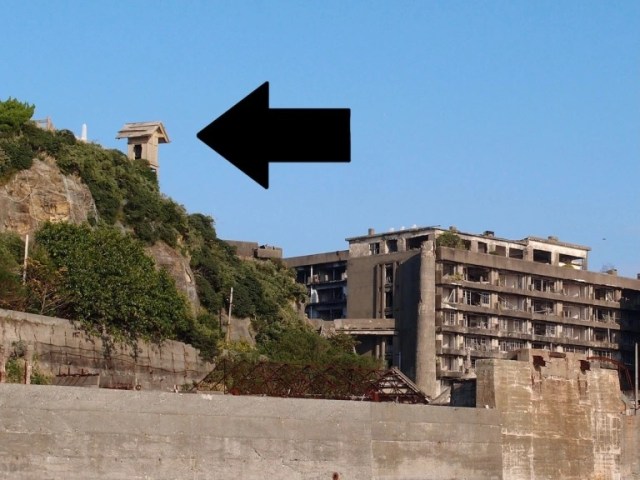
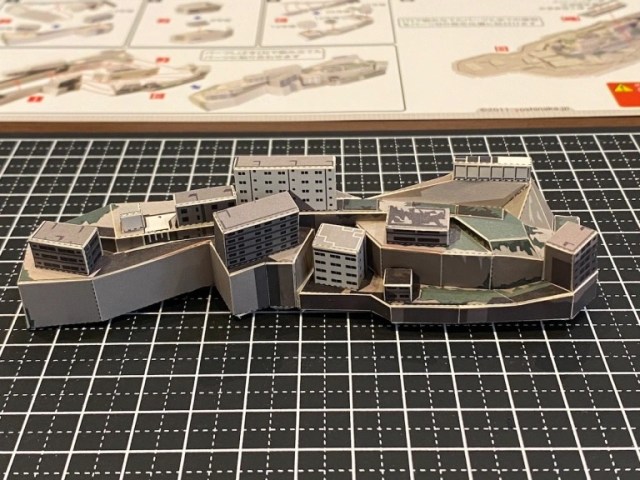
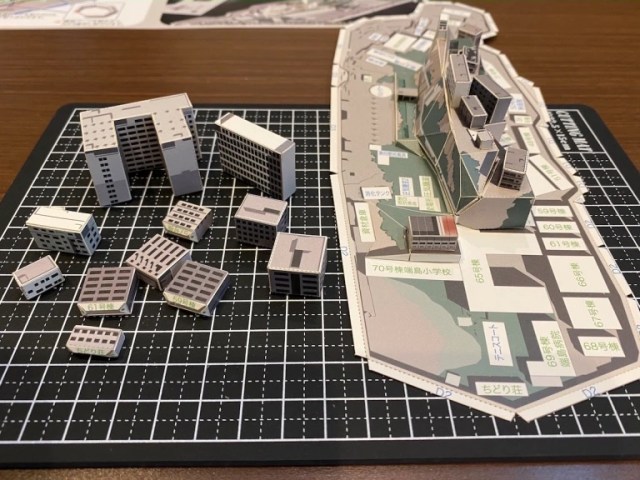
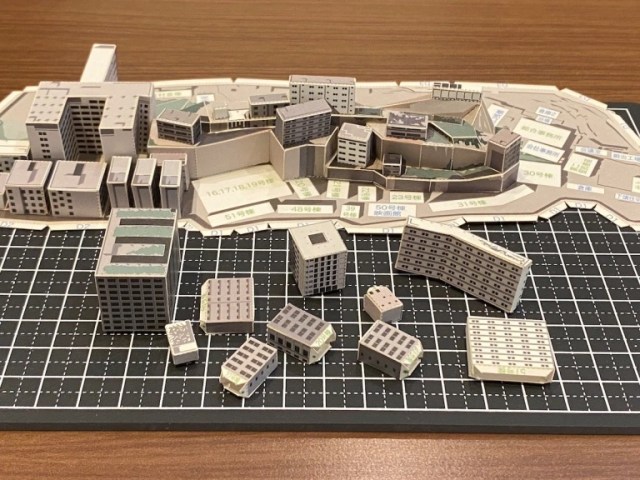
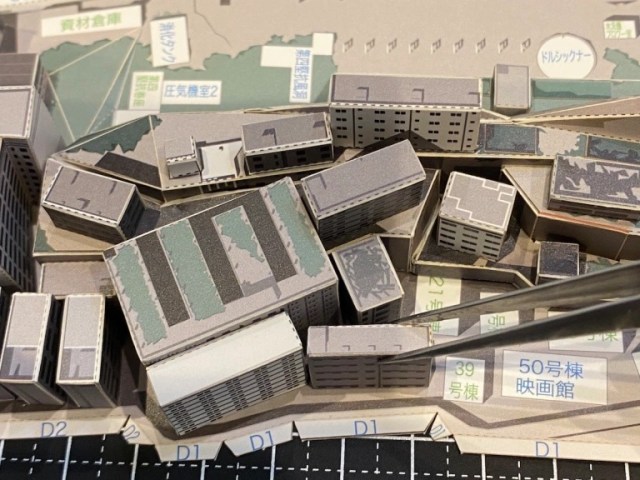

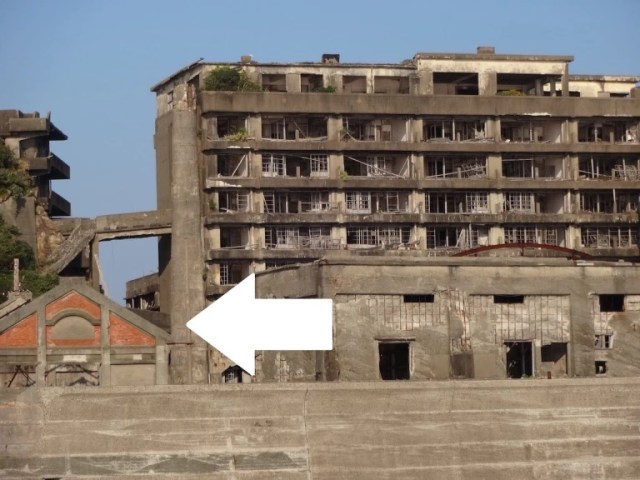
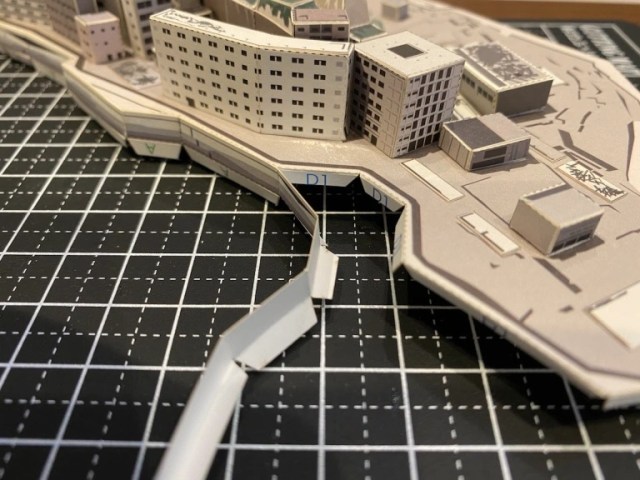
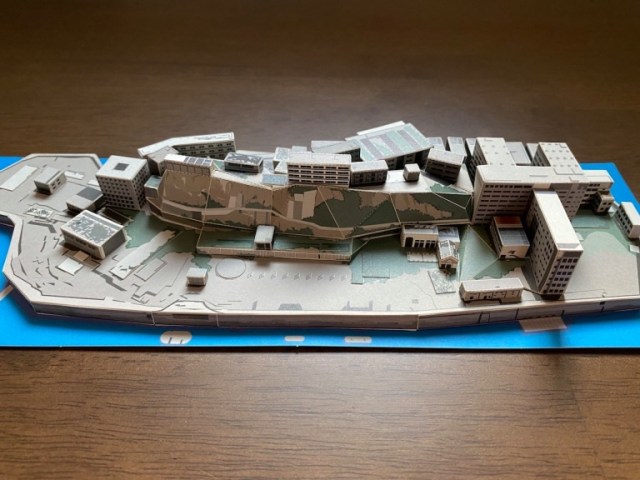
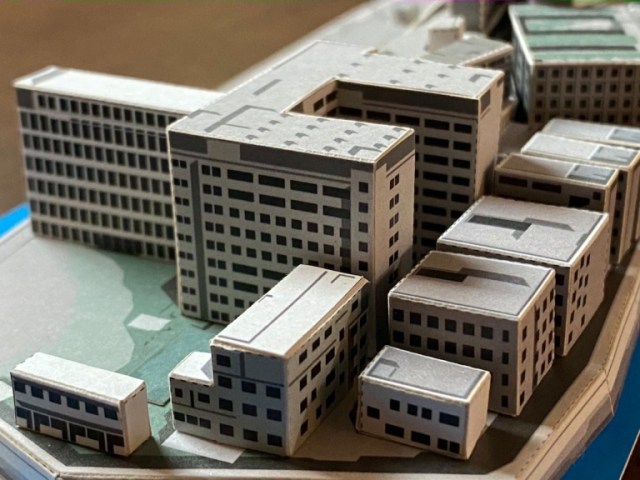
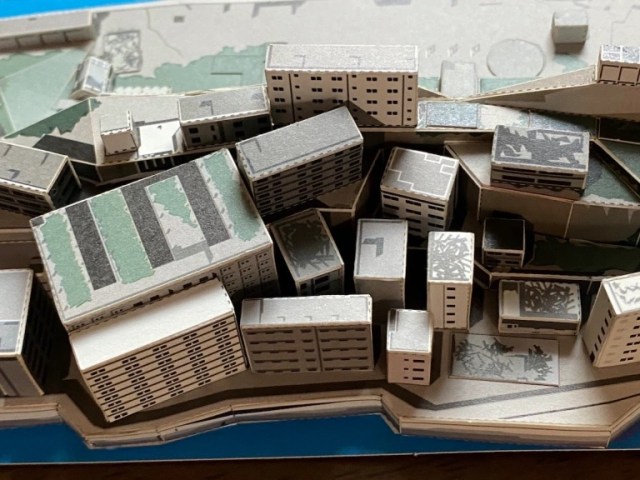
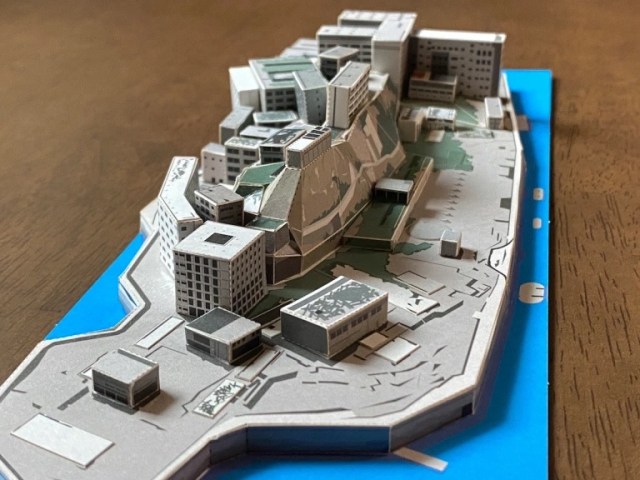
 Cruising around Gunkanjima, Japan’s otherworldly “Battleship Island”【Photos】
Cruising around Gunkanjima, Japan’s otherworldly “Battleship Island”【Photos】 Gunkanjima and 22 sites of Japan Meiji Industrial Revolution up for World Heritage award
Gunkanjima and 22 sites of Japan Meiji Industrial Revolution up for World Heritage award Ring in the new year with papercraft tuna and plate of nigiri sushi from Sushi Zanmai
Ring in the new year with papercraft tuna and plate of nigiri sushi from Sushi Zanmai Papercraft kit allows you to recreate mysterious village from Spirited Away in incredible detail
Papercraft kit allows you to recreate mysterious village from Spirited Away in incredible detail The dirty reason China can’t always tell North Korea what to do
The dirty reason China can’t always tell North Korea what to do McDonald’s new Happy Meals offer up cute and practical Sanrio lifestyle goods
McDonald’s new Happy Meals offer up cute and practical Sanrio lifestyle goods Starbucks reopens at Shibuya Scramble Crossing with new look and design concept
Starbucks reopens at Shibuya Scramble Crossing with new look and design concept Our reporter takes her 71-year-old mother to a visual kei concert for the first time
Our reporter takes her 71-year-old mother to a visual kei concert for the first time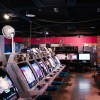 Tokyo’s most famous arcade announces price increase, fans don’t seem to mind at all
Tokyo’s most famous arcade announces price increase, fans don’t seem to mind at all Is the new Shinkansen Train Desk ticket worth it?
Is the new Shinkansen Train Desk ticket worth it? Disney princesses get official manga makeovers for Manga Princess Cafe opening in Tokyo
Disney princesses get official manga makeovers for Manga Princess Cafe opening in Tokyo Hey, Japanese taxi driver! Take us to your favorite restaurant in Tsuruga City!
Hey, Japanese taxi driver! Take us to your favorite restaurant in Tsuruga City! Beautiful new Final Fantasy T-shirt collection on the way from Uniqlo【Photos】
Beautiful new Final Fantasy T-shirt collection on the way from Uniqlo【Photos】 There’s a park inside Japan where you can also see Japan inside the park
There’s a park inside Japan where you can also see Japan inside the park At this Kyoto shrine, be careful what you wish for—and how—, because you just might get it
At this Kyoto shrine, be careful what you wish for—and how—, because you just might get it We try out “Chan Ramen”, an underground type of ramen popular in the ramen community
We try out “Chan Ramen”, an underground type of ramen popular in the ramen community New Studio Ghibli bedding sets are cool in all senses of the word
New Studio Ghibli bedding sets are cool in all senses of the word Our Japanese reporter visits Costco in the U.S., finds super American and very Japanese things
Our Japanese reporter visits Costco in the U.S., finds super American and very Japanese things Foreign English teachers in Japan pick their favorite Japanese-language phrases【Survey】
Foreign English teachers in Japan pick their favorite Japanese-language phrases【Survey】 New Pokémon cakes let you eat your way through Pikachu and all the Eevee evolutions
New Pokémon cakes let you eat your way through Pikachu and all the Eevee evolutions Japanese convenience store packs a whole bento into an onigiri rice ball
Japanese convenience store packs a whole bento into an onigiri rice ball Hanton rice — a delicious regional food even most Japanese people don’t know about, but more should
Hanton rice — a delicious regional food even most Japanese people don’t know about, but more should Final Fantasy, Kingdom Hearts, and Dragon Quest pet product line announced by Square Enix
Final Fantasy, Kingdom Hearts, and Dragon Quest pet product line announced by Square Enix Studio Ghibli releases Kiki’s Delivery Service chocolate cake pouches in Japan
Studio Ghibli releases Kiki’s Delivery Service chocolate cake pouches in Japan Japan’s bone-breaking and record-breaking roller coaster is permanently shutting down
Japan’s bone-breaking and record-breaking roller coaster is permanently shutting down New definition of “Japanese whiskey” goes into effect to prevent fakes from fooling overseas buyers
New definition of “Japanese whiskey” goes into effect to prevent fakes from fooling overseas buyers Foreign passenger shoves conductor on one of the last full runs for Japan’s Thunderbird train
Foreign passenger shoves conductor on one of the last full runs for Japan’s Thunderbird train Kyoto bans tourists from geisha alleys in Gion, with fines for those who don’t follow rules
Kyoto bans tourists from geisha alleys in Gion, with fines for those who don’t follow rules Studio Ghibli unveils Mother’s Day gift set that captures the love in My Neighbour Totoro
Studio Ghibli unveils Mother’s Day gift set that captures the love in My Neighbour Totoro Domino’s Japan now sells…pizza ears?
Domino’s Japan now sells…pizza ears? Toyota built a life-sized Miraidon Pokémon and are letting people test drive it this weekend
Toyota built a life-sized Miraidon Pokémon and are letting people test drive it this weekend New Japanese KitKat flavour stars Sanrio characters, including Hello Kitty
New Japanese KitKat flavour stars Sanrio characters, including Hello Kitty Sales of Japan’s most convenient train ticket/shopping payment cards suspended indefinitely
Sales of Japan’s most convenient train ticket/shopping payment cards suspended indefinitely Sold-out Studio Ghibli desktop humidifiers are back so Totoro can help you through the dry season
Sold-out Studio Ghibli desktop humidifiers are back so Totoro can help you through the dry season Japanese government to make first change to romanization spelling rules since the 1950s
Japanese government to make first change to romanization spelling rules since the 1950s Ghibli founders Toshio Suzuki and Hayao Miyazaki contribute to Japanese whisky Totoro label design
Ghibli founders Toshio Suzuki and Hayao Miyazaki contribute to Japanese whisky Totoro label design Doraemon found buried at sea as scene from 1993 anime becomes real life【Photos】
Doraemon found buried at sea as scene from 1993 anime becomes real life【Photos】 Tokyo’s most famous Starbucks is closed
Tokyo’s most famous Starbucks is closed One Piece characters’ nationalities revealed, but fans have mixed opinions
One Piece characters’ nationalities revealed, but fans have mixed opinions We asked a Uniqlo employee what four things we should buy and their suggestions didn’t disappoint
We asked a Uniqlo employee what four things we should buy and their suggestions didn’t disappoint Princesses, fruits, and blacksmiths: Study reveals the 30 most unusual family names in Japan
Princesses, fruits, and blacksmiths: Study reveals the 30 most unusual family names in Japan Studio Ghibli’s new desktop Howl’s Moving Castle will take your stationery on an adventure
Studio Ghibli’s new desktop Howl’s Moving Castle will take your stationery on an adventure Take it from a local: This resort island off the coast of Nagasaki is totally worth a side trip
Take it from a local: This resort island off the coast of Nagasaki is totally worth a side trip Check out this absolutely stunning drone video of Nagasaki’s Battleship Island in Ultra HD
Check out this absolutely stunning drone video of Nagasaki’s Battleship Island in Ultra HD The top 5 places to see the sun set in Japan
The top 5 places to see the sun set in Japan 5 best Studio Ghibli papercraft kits that you can assemble yourself
5 best Studio Ghibli papercraft kits that you can assemble yourself Fukuoka City aims to resume traffic at site of road collapse less than a week after accident
Fukuoka City aims to resume traffic at site of road collapse less than a week after accident Abandoned Chinese fishing village gets a natural facelift and it’s awesome 【Photos】
Abandoned Chinese fishing village gets a natural facelift and it’s awesome 【Photos】 This tiny island you can walk to is a perfect snapshot of why Japan is an amazing place to travel
This tiny island you can walk to is a perfect snapshot of why Japan is an amazing place to travel Japanese department store invites couples to mine a solid chocolate mountain this Valentine’s Day
Japanese department store invites couples to mine a solid chocolate mountain this Valentine’s Day Amazing time-lapse-style video shows 150-year history of the growth of train stations in Japan
Amazing time-lapse-style video shows 150-year history of the growth of train stations in Japan Love Ghibli’s Castle in the Sky? Check out these real Laputa-like locations!
Love Ghibli’s Castle in the Sky? Check out these real Laputa-like locations! Fishermen in Hokkaido hope their shrimpy anime mascot will convince you to eat more ebi
Fishermen in Hokkaido hope their shrimpy anime mascot will convince you to eat more ebi 16 facts about China that will blow your mind
16 facts about China that will blow your mind This private island in the Pacific Ocean is open to guests – but only Japanese ones
This private island in the Pacific Ocean is open to guests – but only Japanese ones This 4K video of Kagoshima filmed by drone will settle your summer vacation plans【Video】
This 4K video of Kagoshima filmed by drone will settle your summer vacation plans【Video】 With time and effort, a Japanese candy box becomes a ship sculpture worthy of its naval packaging
With time and effort, a Japanese candy box becomes a ship sculpture worthy of its naval packaging World’s largest toilet manufacturer lets you assemble your very own miniature paper toilet
World’s largest toilet manufacturer lets you assemble your very own miniature paper toilet
Leave a Reply